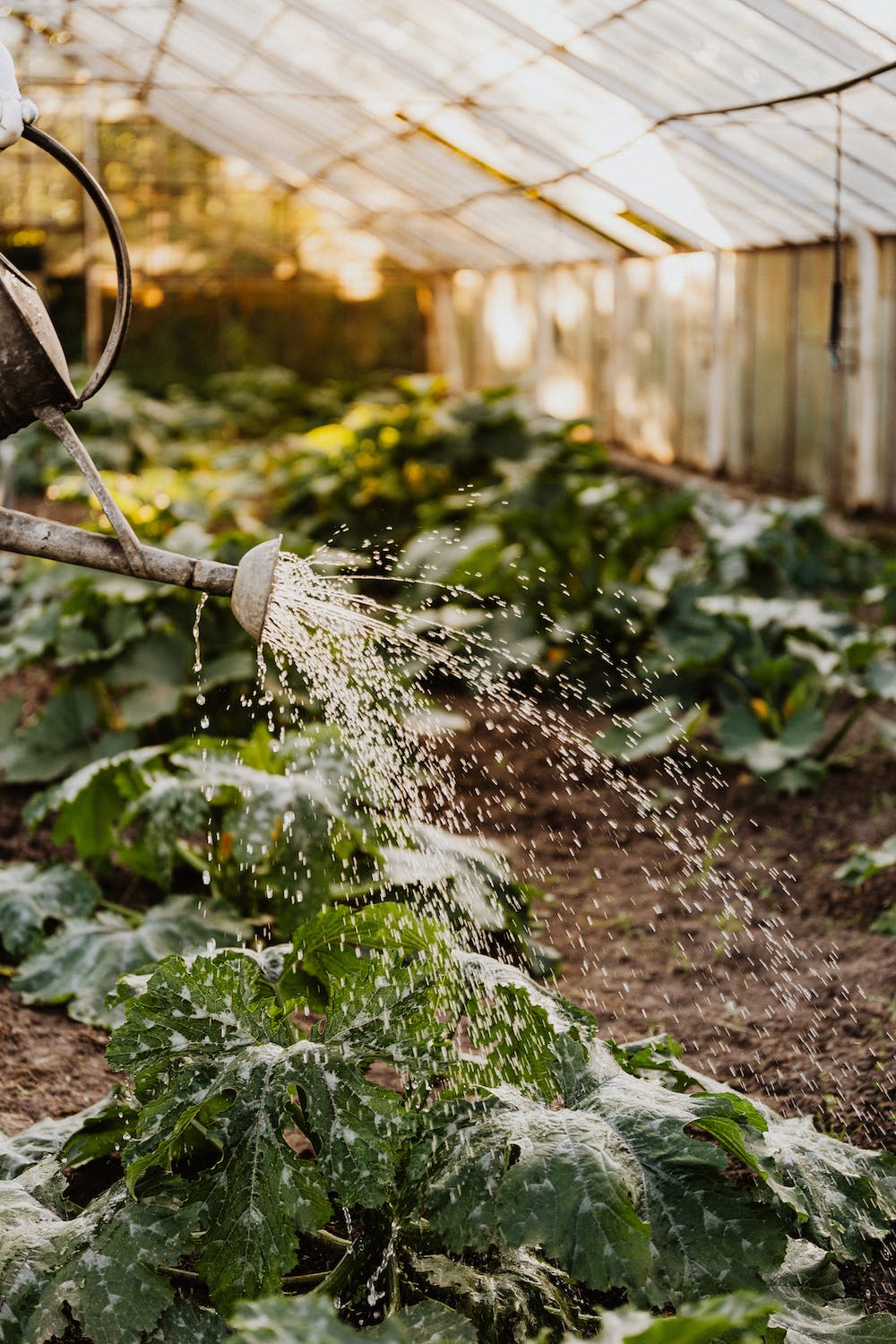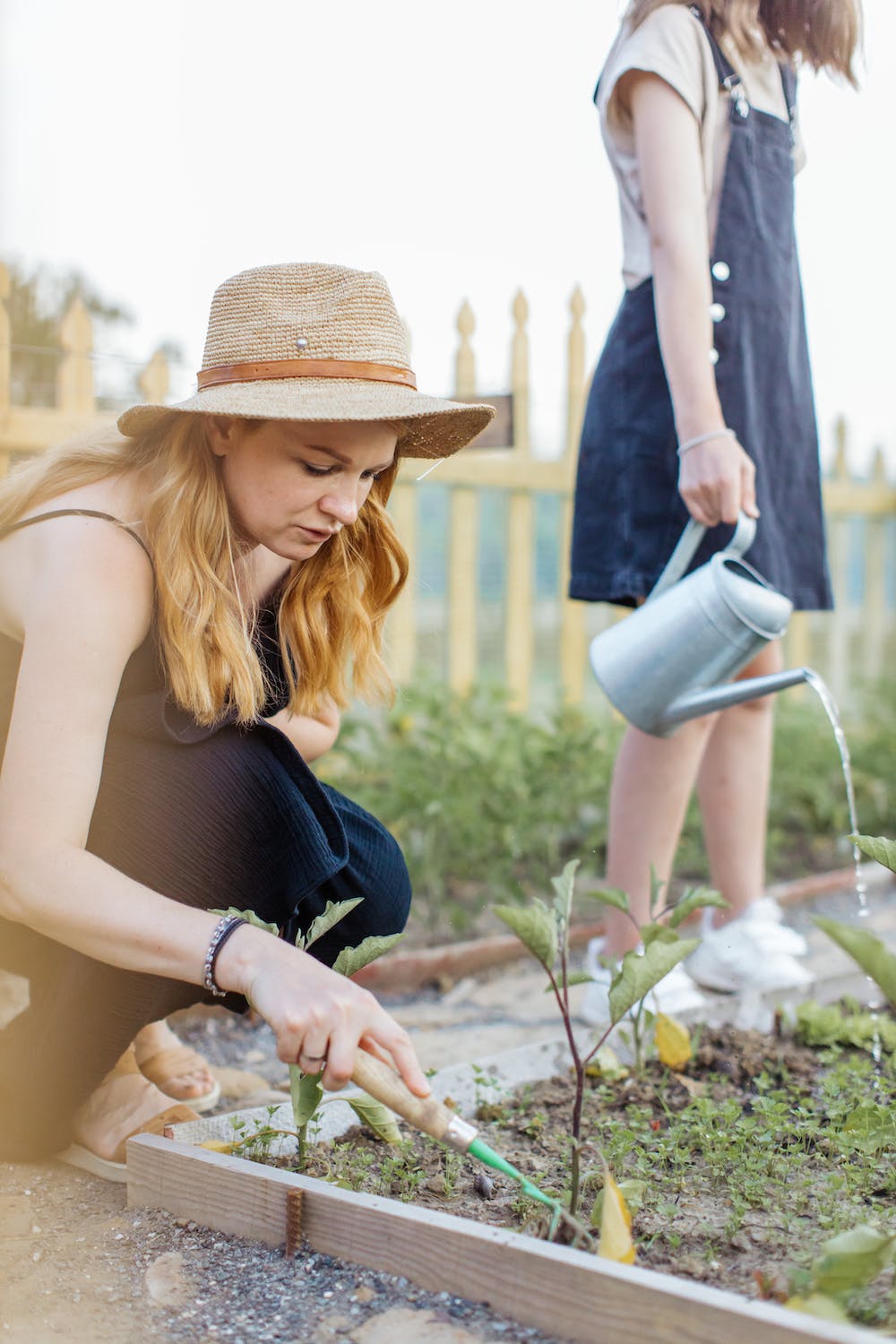
Think of watering as your plants’ lifeline – it’s not just about giving them a drink. It’s about providing the perfect amount at the right time to keep those tomatoes plump, cucumbers crisp, and carrots sweet. Trust me; your veggies will thank you with an abundance of deliciousness!
A properly planned watering schedule isn’t just about preventing drought stress (though it does that too); it’s about optimizing growth and productivity. Your veggies are like little athletes, and the right watering routine is their training regimen. So, in this blog post, we’ll explore the watering schedule for your home vegetable garden.
How Much Water Does Your Garden Need?
Understanding your garden’s water needs isn’t just about pouring water. It’s about giving each plant exactly what it craves.
First, know your soil type. Different soils have different personalities, and they all react to water in their unique way. Sandy soil is like that friend who can’t hold onto anything – it drains water faster than you can say “hydrate.” On the flip side, clayey soil is a bit clingy; it holds watertight, sometimes a bit too tight for comfort. Knowing your soil type helps you tailor your watering game to suit its quirks.
Now, onto the weather report for your garden. Climate and weather conditions play a big role in your plants’ water intake. Hot and sunny days? Brace yourself for some thirsty plants. Cool and overcast? Your plants might need a lighter sip. It’s like adjusting your watering routine based on the mood swings of Mother Nature.
But wait, there’s more! Your plants themselves have their preferences. Each species has different water needs. Tomatoes might want a consistent moisture level, while herbs like rosemary prefer to dry out a bit between sips. And maturity matters, too – baby plants need more pampering than the seasoned veterans in your garden.
Signs of Overwatering and Underwatering
Now that we’ve got the lowdown on factors influencing water needs, let’s talk about something equally important – reading the signals your plants are sending. Yes, they speak to us, but not in words. Instead, they use a language of wilting leaves and droopy stems. So, let’s decode the signs of overwatering and underwatering.
Overwatering is the act of being a bit too generous with the watering can. How do you know if you’ve gone overboard? Well, your plants might start looking like they’ve had too many late-night snacks – their leaves become swollen, and they might even develop a case of the dreaded yellowing.
On the contrary, underwatering is the opposite end of the hydration spectrum. Wilting is the classic sign. The leaves lose their usual perkiness and start to droop like a sad puppy waiting for a treat. Crispy, brown edges on the leaves might also be a cry for help – a desperate call for a good, satisfying gulp of water.
So, my gardening comrades, keeping an eye out for these signs is like having a secret code with your plants. It’s their way of saying, “Hey, I need a little more (or less) water over here!” Paying attention to these cues helps you adjust your watering routine, making you the superhero your plants didn’t know they needed.

Essential Tools for Efficient Watering
First, we’ve got the classic heroes of the watering world – quality watering cans and hoses. Watering cans are perfect for precise, targeted watering, especially for delicate seedlings and potted plants. Hoses, on the other hand, give you the flexibility to cover larger areas with ease. Invest in good-quality ones – your arms will thank you, and so will your plants.
You can consider investing in drip irrigation systems if your vegetable garden is large. These are like the ninjas of watering – silent, efficient, and deadly accurate. Drip systems deliver water directly to the base of your plants, minimizing water wastage and keeping leaves dry, which is excellent for preventing certain diseases. Plus, it’s a set-it-and-forget-it kind of deal, giving you more time to enjoy your garden.
Next on our list – soaker hoses. They can snake their way through your garden beds, delivering a slow, steady stream of water directly to the roots. Soaker hoses are perfect for keeping the soil consistently moist, and they’re super easy to install.
If you are a big fan of a sustainable lifestyle, you should consider rain barrels. These eco-friendly wonders collect rainwater, giving you a free and sustainable water source. Connect your rain barrel to your watering system, and voilà – you’re not just watering; you’re water-smart and eco-conscious.
How to Create a Watering Schedule for Your Home Vegetable Garden
Seasonal variations in watering needs
Spring: Establishing a Strong Foundation
Spring is the season of new beginnings. Your plants are waking up from their winter slumber, and they need a good drink to kickstart their growth.
Focus on deep, thorough watering to encourage strong root development. Keep an eye on the weather – spring can be unpredictable, so adjust your watering schedule based on rain forecasts and temperature fluctuations.
Summer: Coping with Heat Stress
This is when your garden can get a bit hot under the collar. Increase the frequency of your watering sessions during the scorching days, especially for plants that crave moisture.
Water early in the morning or later in the evening to minimize evaporation. Mulching around your plants is like giving them a sun hat – it helps retain moisture and keeps the soil cool.
Fall: Preparing for Winter Dormancy
As the days get shorter and temperatures start to drop, your garden is winding down for winter. Adjust your watering routine to match the slow pace of your plants. Gradually reduce the frequency of watering as they prepare for dormancy.
However, don’t neglect them entirely – they still need some hydration to carry them through the colder months.
Time of day considerations
Morning watering benefits
Rise and shine, plants! Morning watering is like a refreshing cup of coffee for your garden. It’s the ideal time for a few reasons.
First off, the temperature is cooler, meaning less water will evaporate before your plants can slurp it up.
Second, wet leaves have time to dry before the sun gets too intense, reducing the risk of diseases.
Lastly, morning hydration sets your plants up for a day of photosynthesis success – they’re energized and ready to soak up that sunlight.
Evening watering precautions
While evenings might seem like a cozy time to water, there are a few precautions to keep in mind. Watering too late in the day can create a damp environment that lingers into the night, potentially inviting fungal diseases to join the party. It’s like leaving the door open for trouble to stroll in.
To avoid this, water earlier in the evening, giving your plants ample time to dry before nightfall. Also, aim to water the soil, not the leaves, to minimize excess moisture on foliage.

How to Know Your Soil Moisture Levels
Finger Test
This one is as straightforward as it gets. Stick your finger into the soil, about an inch or two deep, and feel around. If it feels dry, your plants might be getting thirsty. If it’s still damp, your soil is doing its job. It’s like getting a firsthand feel for your garden’s hydration needs.
Just be sure to wash your hands afterward – soil can be a bit clingy!
Moisture Meters
Enter the high-tech detective tool – the moisture meter. Simply insert the probe into the soil, and voilà – instant moisture readings. The meter will tell you if your soil is bone dry, wet, or somewhere in between. It’s a handy gadget, especially if you want precise measurements without getting your hands dirty.
Visual Inspection
Sometimes, your eyes can be the best detectives. Take a good look at your soil’s surface. Dry soil often looks lighter in color and might have visible cracks. Wet soil, on the other hand, appears darker and clumps together. Your soil is sending you visual cues about its hydration status. Keep an eye out for these clues during your regular garden inspections.
Watering Techniques for Specific Vegetables
Deep-Rooted Vegetables
Carrots, tomatoes, and other deep-rooted veggies are like nature’s treasure hunters, sending their roots deep into the soil. To ensure they strike gold, so to speak, give them a deep soak.
Water slowly and patiently, allowing the moisture to reach those subterranean roots. This method encourages the roots to grow deeper, making your plants more resilient during dry spells.
Shallow-Rooted Vegetables
Now, let’s shift our attention to the more delicate veggies with shallow roots, like lettuce and radishes. Their roots prefer to stay close to the soil surface, sipping water from the top layers.
For these guys, it’s all about frequent, lighter watering. Think of it as serving them small sips regularly – keeping the soil consistently moist without overwhelming those shallow roots.
Container Gardening Considerations
Container plants have their own watering rulebook. The soil in pots tends to dry out faster, demanding a bit more attention.
When watering container plants, be thorough – let the water seep through the drainage holes. Check the moisture levels more often, especially during hot spells. Container gardening is like being a diligent caretaker, ensuring your potted companions never go thirsty.

3 Common Watering Problems and How to Solve Them
#1. Fungal Diseases Due to Overwatering
Overwatering can create a playground for fungal diseases. The excess moisture lingers on leaves and soil, inviting fungi to join the party. To steer clear of this fungal fiesta, focus on watering at the base of the plants, avoiding wetting the foliage.
Ensure good air circulation by spacing your plants adequately, and consider mulching to prevent soil splashing onto leaves.
#2. Nutrient Leaching and Its Prevention
When you water too much or too quickly, essential nutrients get washed away before your plants can absorb them.
To prevent this nutrient heist, water slowly and deeply. Consider adding organic matter to your soil to improve its water-holding capacity. Mulching comes to the rescue again, acting as a nutrient guardian, preventing valuable minerals from escaping with the excess water.
#3. Adjusting the Watering Schedule During Extreme Weather Conditions
Extreme weather conditions are like a stress test for your garden. During scorching heat waves or torrential downpours, your watering routine might need a tweak.
In the sweltering heat, water should be used more frequently, but early in the morning or late in the evening, to reduce evaporation. In heavy rains, adjust your schedule to prevent waterlogging.
Monitoring your soil moisture becomes crucial during these extremes – the finger test or a trusty moisture meter can be your best allies.
Final Thoughts
Remember the basics – consistency is key. Keep a keen eye on your garden, observe how your plants respond to your care, and be ready to tweak your watering schedule accordingly.
Gardening is a learning process, and every garden is unique. Embrace the joy of discovery as you witness the subtle dance between soil, water, and plants. Your garden will whisper its needs if you listen closely.





